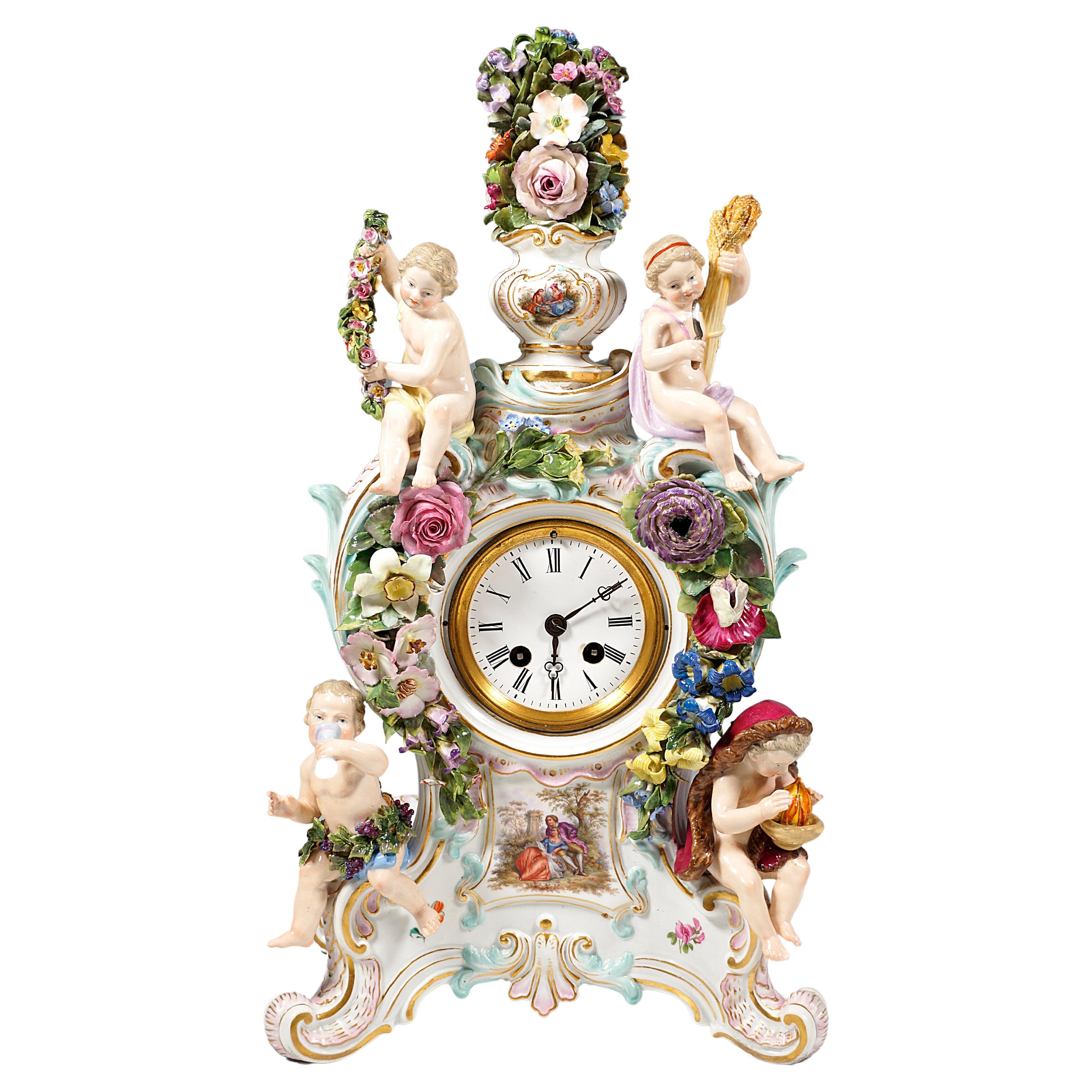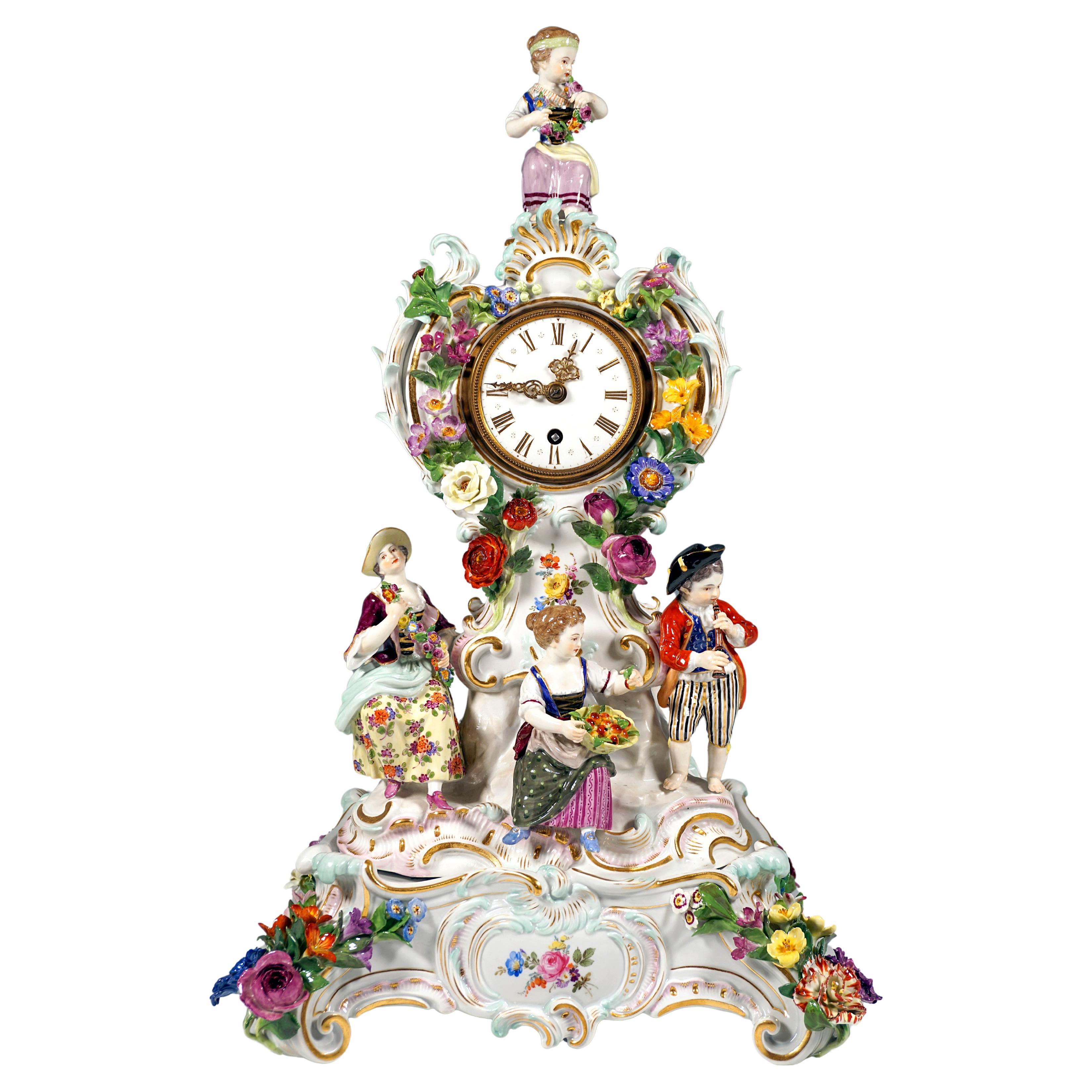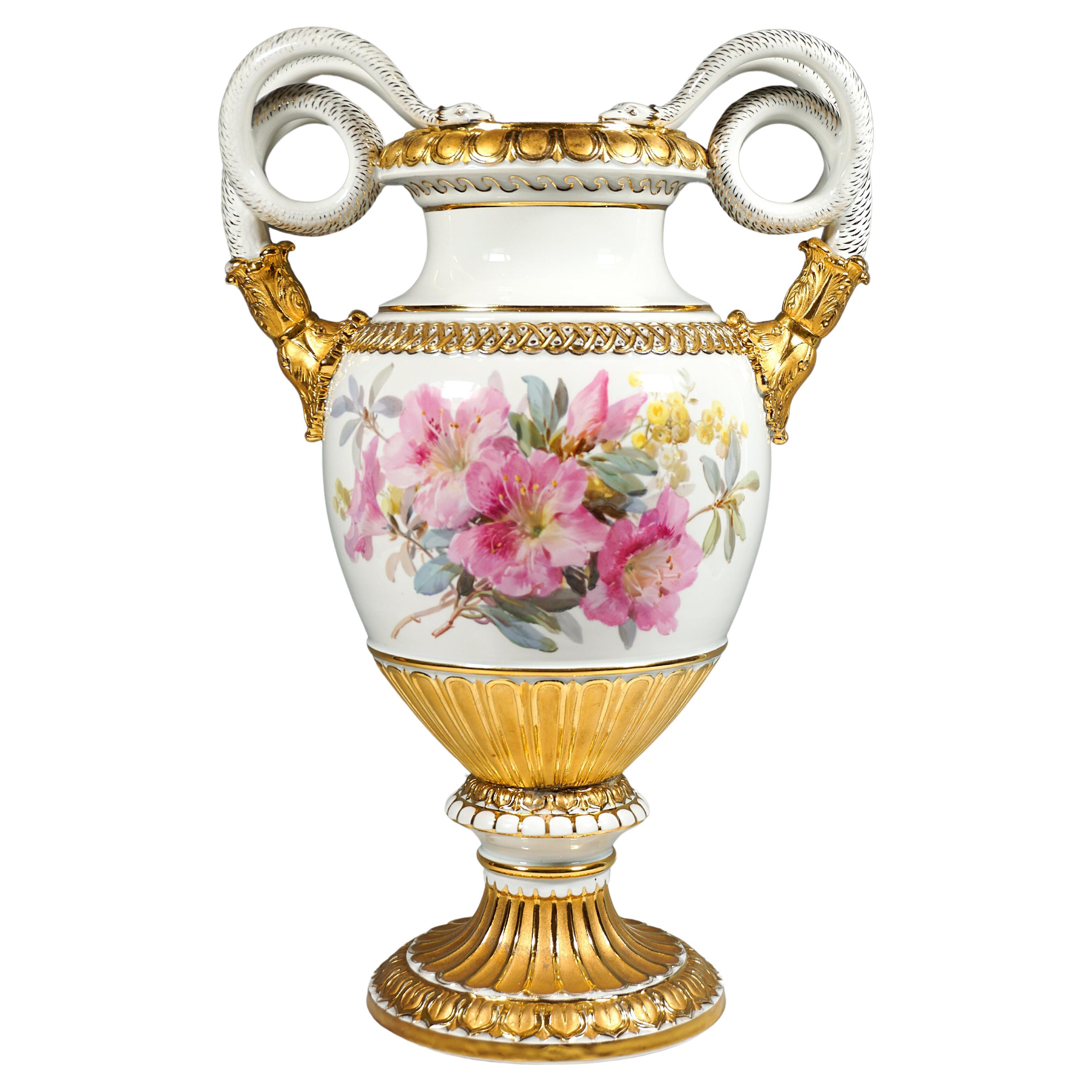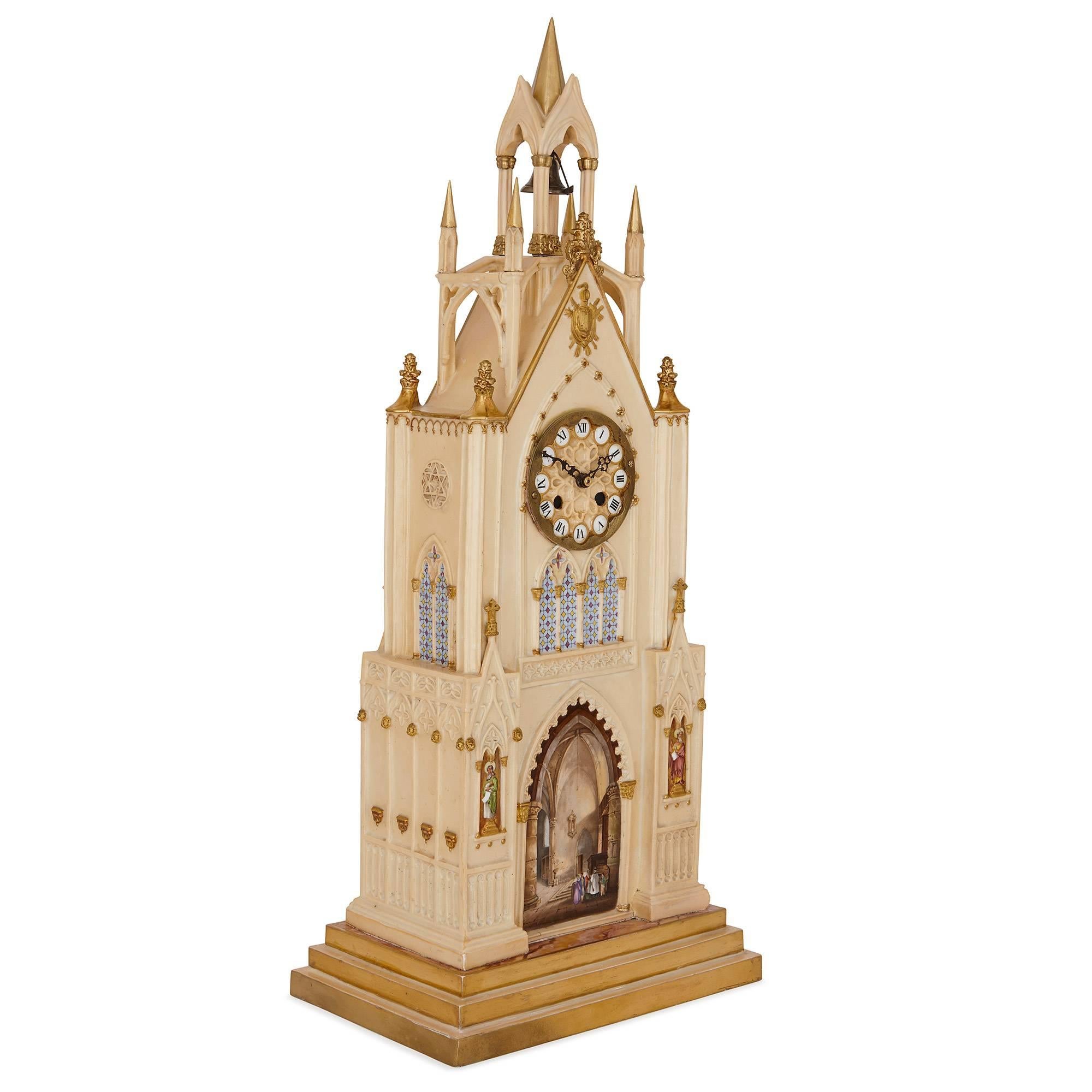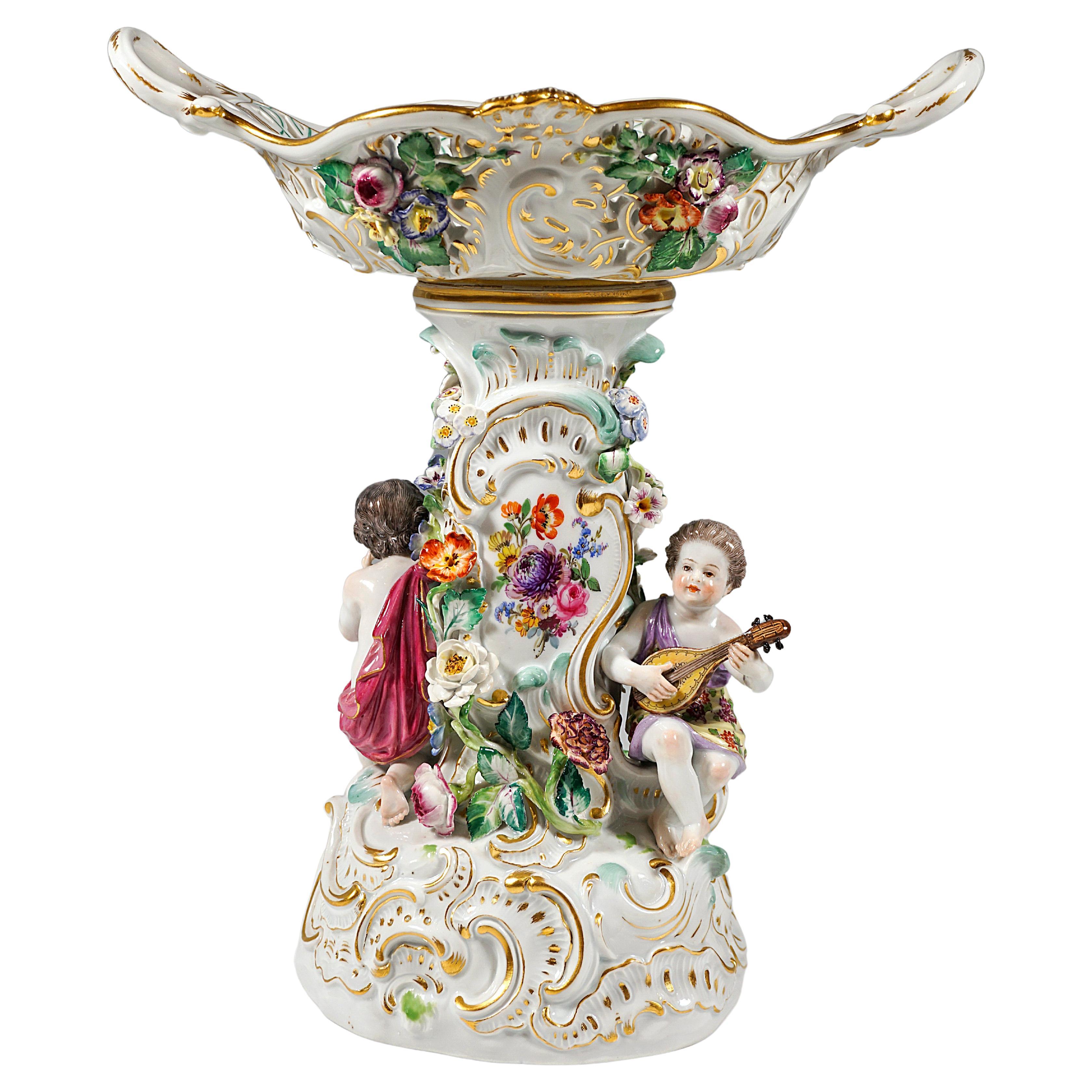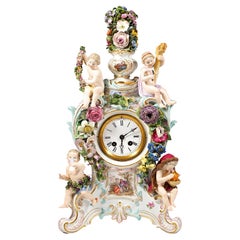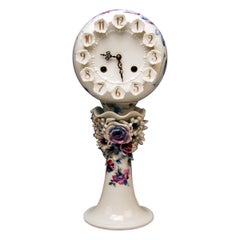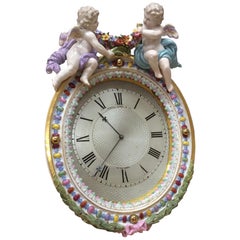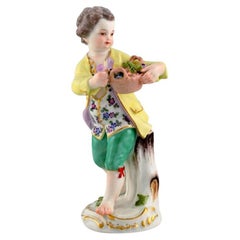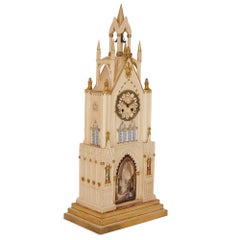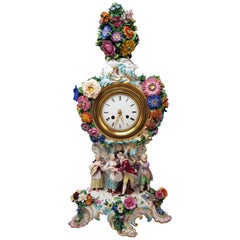
Meissen Mantel Clock Flowers Figurines Model 1047 Leuteritz Height 25.98 inches
View Similar Items
Want more images or videos?
Request additional images or videos from the seller
1 of 11
Meissen Mantel Clock Flowers Figurines Model 1047 Leuteritz Height 25.98 inches
About the Item
- Creator:Ernst August Leuteritz (Designer)
- Dimensions:Height: 25.98 in (65.99 cm)Width: 11.81 in (30 cm)Depth: 8.66 in (22 cm)
- Style:Rococo Revival (Of the Period)
- Materials and Techniques:
- Place of Origin:
- Period:
- Date of Manufacture:circa 1880
- Condition:There aren't any damages existing. The clock's mechanism is working. Key is existing. - A few excellently made restorations at petals of flowers' blossoms as well as of leaves were done - NOT VISIBLE WITH NAKED EYE.
- Seller Location:Vienna, AT
- Reference Number:1stDibs: LU1014417069891
About the Seller
5.0
Gold Seller
These expertly vetted sellers are highly rated and consistently exceed customer expectations.
Established in 1988
1stDibs seller since 2013
279 sales on 1stDibs
Typical response time: 5 hours
More From This SellerView All
- Meissen Splendour Clock 'The Four Seasons' by E.A. Leuteritz, Around 1880By Ernst August Leuteritz, Meissen PorcelainLocated in Vienna, ATThe clock case was designed by Ernst August Leuteritz using old moulds in the Rococo style: The clock case rises on a base with gold-highlighted rocailles, richly decorated with deli...Category
Antique 1880s German Rococo Porcelain
MaterialsPorcelain
- Meissen Splendour Clock With Gardener Figures On Pedestal by Leuteritz, Ca 1880By Ernst August Leuteritz, Meissen PorcelainLocated in Vienna, ATThe clock and the pedestal were designed by Leuteritz using old forms in the Rococo style: The clock case rises on a rock base with gold heightened rocailles, richly decorated with d...Category
Antique 1880s German Rococo Porcelain
MaterialsPorcelain
- Meissen Table Clock Modern Model 60886 Painted Flower, Peter Strang, circa 1981Located in Vienna, ATMeissen gorgeous rare table clock of finest manufacturing quality. Measures: height 38.5 cm (= 15.15 inches) diameter 17.5 cm (= 6.88 inches) Manufactory: Meissen Hallmarked: B...Category
Late 20th Century German Modern Porcelain
MaterialsPorcelain
- Meissen Mantel Table Clock Bronze Porcelain Autumn Fall Kaendler, circa 1745By Johann Joachim KaendlerLocated in Vienna, ATMeissen gorgeous rococo mantel / table clock made of gilded / gilt bronze, excellently decorated with sculptured figurines made of porcelain. Manufactory: Meissen Hallmarked: Blue M...Category
Antique 1740s German Rococo Porcelain
MaterialsBrass, Bronze, Enamel
$5,228 Sale Price26% Off - Meissen Snake Handles Vase Painted Designed by Leuteritz, circa 1924-1934By Ernst August LeuteritzLocated in Vienna, ATMeissen Snake Handles Vase / designed by Leuteritz Manufactory: Meissen Dating: made during Pfeiffer Period 1924 - 34 Hallmarked: Mei...Category
Vintage 1920s German Empire Revival Porcelain
MaterialsPorcelain
- Meissen Snake Handle Vase With Soft Flower Painting, by Leuteritz, c 1865 H:48cmBy Ernst August Leuteritz, Meissen PorcelainLocated in Vienna, ATVery large double snake-handled vase in baluster form on a mounted funnel-shaped base, the handles raised at the sides in the form of coiled pairs of snakes, white ground, the front ...Category
Antique 1860s German Baroque Porcelain
MaterialsPorcelain
You May Also Like
- Meissen Porcelain Strut Mantel ClockBy Howell James & Co.Located in Norwich, GBA Meissen porcelain oval shaped Strut clock with two putti and well modelled trailing flowers and wreath decoration. (The back of the case at 12 o’clock carrying the crossed swords m...Category
Antique 1870s English Victorian Mantel Clocks
MaterialsPorcelain
- Antique Meissen Porcelain Figurine, Boy with a Flower Basket, Model 149Located in Copenhagen, DKAntique Meissen porcelain figurine. Boy with flower basket. Model 149. Approx. 1900. Measures: 12.8 x 6.5 cm. In excellent condition. Stamped. 1st factor...Category
Antique Early 1900s German Rococo Revival Porcelain
MaterialsPorcelain
- French Porcelain Mantel Clock by Dagoty and HonoreBy Dagoty, Edouard Honoré 1Located in London, GBThis beautiful Gothic Revival style porcelain clock was made by the prestigious French firm Dagoty and Honore, founded by the esteemed porcelain makers Pierre-Louis Dagoty and Edouard Honore...Category
Antique Early 19th Century French Gothic Revival Mantel Clocks
MaterialsPorcelain
- Louis XVI Style Mantel Clock by Ernest RoyerLocated in London, GBThis fine neoclassical style mantel clock will make a sumptuous addition to a grand room, or could be given as a unique gift to a loved one. The clock is the work of Ernest Royer, an...Category
Antique 19th Century French Louis XVI Mantel Clocks
MaterialsBronze, Ormolu
- Antique French Sevres Style Porcelain and Gilt Bronze Mantel ClockLocated in London, GBThe combination of sumptuous, lustrous ormolu and finely decorated Sevres style porcelain makes this mantel clock an exceptional piece. Built in France and retailed by the prestigiou...Category
Antique Mid-19th Century French Neoclassical Mantel Clocks
MaterialsBronze, Ormolu
- Sèvres Porcelain Louis XVI Lyre Mantel Clock by Kinable, Dial by DubuissonBy Dieudonné Kinable, DubuissonLocated in Paris, FRDieudonné Kinable Enamel Dial Attributed to Dubuisson (1731-1815) Exceptional Porcelain Lyre Mantel Clock from the Royal Sèvres Porcelain Manufactory Paris, late Louis XVI period, circa 1785-1790 Height 62 cm; width 26 cm; depth 16 cm The round enamel dial, signed “Kinable”, indicates the hours in Roman numerals, the fifteen-minute intervals in Arabic numerals, the annual calendar and the signs of the Zodiac, by means of four hands, two of which are made of pierced gilt bronze, the two others in blued steel. The magnificent lyre-shaped case is made of “bleu nouveau” Sèvres porcelain and finely chased and gilt bronze. The bezel is made up of a gilt bronze twisted rope; the pendulum is adorned with brilliant-cut paste stones; the body of the lyre is adorned with gilt bronze beading and with laurel leaf and seed motifs, with two rosettes issuing floral and foliate swags. The clock is surmounted by a mask with radiating sunrays. The spreading foot is decorated with beading and twisted rope motifs and a leafy garland. The en-suite decorated oval base is raised upon four flattened ball feet. The Royal Sèvres Porcelain Factory produced the lyre clock model as of 1785. Four colours were offered: turquoise, green, pink and bleu nouveau. These exceptional clocks were made for the connoisseurs of the time. Louis XVI had a similar clock in his Salon des jeux in Versailles; its dial bore the signature of the clockmaker Courieult (this is almost certainly the example illustrated in P. Verlet, Les bronzes dorés français du XVIIIe siècle, Paris, 1999, p. 41). Kinable, however, was the clockmaker who purchased the greatest number of lyre cases from the factory, and he developed the model in the late 18th century. Among the porcelain lyre clocks signed by this brilliant horologer, one example is in the Victoria & Albert Museum in London (illustrated in H. Ottomeyer and P. Pröschel, Vergoldete Bronzen, Band I, Munich, 1986, p. 252, fig. 4.6.26). A second such clock is in the Royal British Collection (see C. Jagger, Royal Clocks, The British Monarchy & its Timekeepers 1300-1900, 1983, p. 130, fig. 176). Bibliography: M. Gay and A. Lemaire, “Les pendules lyre”, in Bulletin de l’Association nationale des Collectionneurs et Amateurs d’Horlogerie ancienne, Winter 1993, n° 68, p. 5-40. Dieudonné Kinable (active circa 1785-1810) One of the most important Parisian clockmakers of the late 18th century. His shop was located at n° 131 Palais Royal. He purchased a great number of lyre-type porcelain clock cases...Category
Antique 1780s French Louis XVI Mantel Clocks
MaterialsBronze
Price Upon RequestFree Shipping
Recently Viewed
View AllMore Ways To Browse
Dresden Meissen Figurines
Antique Dresden Figurines
Antique Dresden Figurine
Antique Dresden Porcelain Figurines
Antique Dresden Porcelain Figurine
Meissen Large Figurine
Antique Clocks German Made
Antique Brass Figurines
Antique Brass Figurine
Porcelain Dog Figurines
German Dresden Figurines
Dresden Figurines Germany
Rococo Framed Porcelain
Brass And Glass Figurine
Hour Glass Sculpture
Brass Large Flower Vase
Antique Dog Figurines
Antique Dog Figurine
